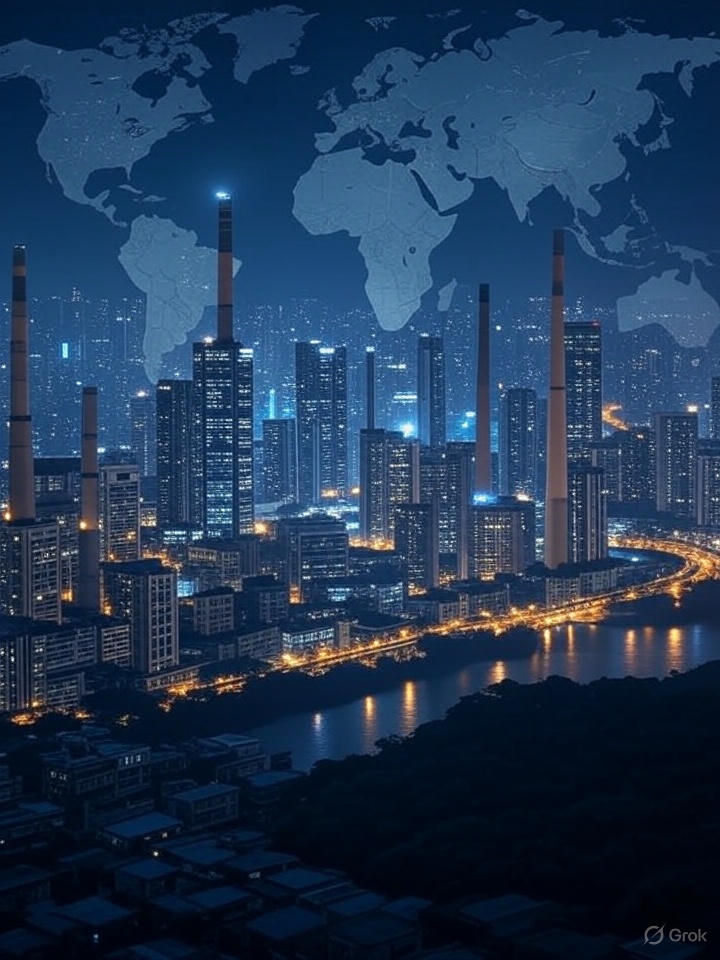Beneath Beijing: The Doomsday Fortress That Could Redraw the World Map
- thebrink2028
- Sep 16
- 2 min read

You’re now inside the first wave of TheBrink. You’ll get insights before most of the world even sees them.
It's 2027, the centenary of China's People's Liberation Army. Alarms blare in Washington as satellite feeds flicker with grainy images of a subterranean empire awakening 30 kilometers southwest of Beijing. Deep below the earth, shielded from the sun and any strike from above, Xi Jinping and his inner circle hunker down in a labyrinth of bunkers, directing a force that could eclipse America's in a flash. This isn't fiction—it's the blueprint being etched into the Chinese hillside right now, a "Beijing Military City" rising like a shadow over global stability.
At its core, this is geopolitics on steroids. China is constructing believed to be the world's largest underground military command center—a sprawling 1,500-acre complex, nearly 10 times the size of the Pentagon. The Joint Operations Command Center (JOCC), it's designed to house the PLA's top brass, including President Xi as chairman of the Central Military Commission, in a network of hardened bunkers resistant to nuclear blasts and U.S. "bunker-buster" bombs. Construction kicked off in mid-2024, with 100s of cranes digging vast pits for tunnels and fortified chambers that could sustain operations through Armageddon.
This is part of a global arms race ringing Cold War paranoia but amplified by today's tech and tensions. Russia has its own deep bunkers like Yamantau Mountain, a secretive complex rumored to rival this in depth, while the U.S. maintains Raven Rock and Cheyenne Mountain as nuclear redoubts. But China's move stands out: it's not retrofitting old sites but building anew, timed with Xi's push for a "world-class" military and a nuclear arsenal projected to hit 1,500 warheads by 2035—on par with America's.
Most media will hide: This fortress isn't just defensive—it's offensive architecture for nuclear warfighting. While the media affiliates on the size, the real horror is the hidden integration with China's hypersonic missiles and AI-driven command systems, allowing real-time coordination of strikes that could "hit any target on Earth".
Beijing's been honing bunker tech since the 1980s, inspired by Soviet designs but now laced with quantum-secure comms that could outpace U.S. cyber defenses.
If conflict erupts, this setup ensures China's leadership survives a first strike, potentially escalating to mutual destruction faster than ever—dragging in allies like the U.S., UK, and Australia via AUKUS pacts. And the human cost? Millions in collateral, from Taiwanese cities to Pacific trade routes, all because one nation's "survival insurance" normalizes doomsday planning.
But this is just the surface. What isn’t being told—the root causes like Xi's paranoia over U.S. encirclement, the blind spots in AI escalation risks, and the survival guide for navigating a multipolar world—is where TheBrink goes next.
Stay tuned and stay Subscribed for more insights.
TheBrink has shifted—into Action Packs, Early Warning Briefs, and sponsored deep-dives designed for you who need more than headlines.
If a single bunker could tip the scales toward global war, is your strategy built to weather the fallout—or will it crumble when the earth shakes?
Tomorrow’s brief is even more urgent. In the meantime, see how other subscribers are supporting research here.


